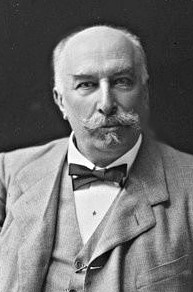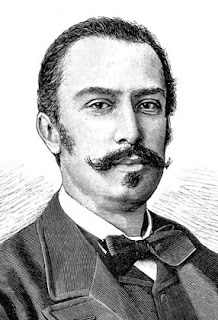Battle of the Milvian Bridge in Rome
How Christianity became official religion of the Roman Empire
Roman emperor Constantine defeated his rival Maxentius in a battle at the Milvian Bridge (Ponte Milvio), a vital point for crossing the River Tiber, on this day in 312 in Rome. The battle was a crucial moment in a civil war that ended with Constantine I as sole ruler of the Roman Empire and Christianity established as the empire’s official religion. The Roman Empire was being torn apart by different factions at war with each other at the beginning of the fourth century. Although Constantine - known also as Constantine the Great - was declared Emperor at York in 306, his brother in law and rival, Maxentius, later claimed the imperial title in Rome. In 312, Constantine led a force to march on Rome. Troops fighting for Maxentius lay in wait for them next to the River Tiber at Pons Milvius (Ponte Milvio, which had been partially dismantled to stop the attacking force crossing the river). It is said that Constantine had a dream before the battle and saw the sun, the object of his own worship, overlain by the figure of a cross. Beneath the cross was the message in hoc signo vinces (in this sign prevail). Read more…
_____________________________________
Eros Ramazzotti - singer-songwriter
Best-selling Italian star has enduring appeal
The best-selling Italian singer and songwriter Eros Ramazzotti was born on this day in 1963 in Rome. Ramazzotti, whose style has developed from pure pop to a contemporary soft rock genre with elements of classical crossover, has sold around 65 million records in a career spanning almost 40 years, putting him among the top 12 Italian recording artists of all time. He is popular throughout Europe and in Spanish-speaking countries in South America, so much so that he records most of his albums in Spanish as well as Italian. Among his 13 studio albums, three compilations and six live albums, 12 have reached No 1 in the Italian charts and 10 in the Swiss charts. In addition, Ramazzotti has had No 1s in Austria, Switzerland, the Netherlands, Belgium, Germany and Sweden. Twice - with 9 in 2003 and e2 in 2007 – he sold more records in that year in Italy than any other artist. Other major selling albums have been In ogni senso, Tutte storie, Dove c'è musica, Stilelibero and Calma apparente. His appeal is said to stem from his unique voice - a vibrant, slightly nasal tenor – his energetic delivery of catchy pop numbers and the passion he brings to often semi-autobiographical ballads. Read more…
______________________________________
The March on Rome
The insurrection that put Fascists in power
The March on Rome that resulted in Benito Mussolini’s Fascist party taking control of the Italian government took place on this day 100 years ago in 1922. A mob comprising members of Mussolini’s Blackshirt militia and other party supporters converged on the city. At the same time, other Blackshirt groups were capturing strategic locations throughout Italy. Italy’s Liberal prime minister, Luigi Facta, wanted to deploy the army to put down the insurrection and hastened to the Palazzo Quirinale to see the king, Victor Emmanuel III, and ask him to sign a decree of martial law so that he could put Rome in a state of siege. At first, the monarch was prepared to grant his request, but after giving it more thought he changed his mind, much to Facta’s consternation. Instead, the Blackshirt mob, headed by four Mussolini henchmen - Italo Balbo, Cesare Maria De Vecchi, Michele Bianchi and Emilio De Bono - were allowed to enter Rome unchallenged. By the following day, what had been effectively a bloodless coup d’état was completed when Victor Emmanuel III invited Mussolini to form a government and at the age of 39 become what was then Italy’s youngest prime minister. Read more…
______________________________________
Sergio Tòfano – actor and illustrator
The many talents of stage and screen star
Comic actor, director, writer and illustrator Sergio Tòfano died on this day in 1973 in Rome. He is remembered as an intelligent and versatile theatre and film actor and also as the creator of the much-loved cartoon character Signor Bonaventura, who entertained Italians for more than 40 years. Tòfano was born in Rome in 1886, the son of a magistrate, and studied at the University of Rome and the Academy of Santa Cecilia. He made his first appearance on stage in 1909. He soon specialised as a comic actor and worked with a string of famous directors including Luigi Almirante and Vittorio de Sica. He became famous after his performance as Professor Toti in Luigi Pirandello’s comic play, Pensaci, Giacomino! Also a talented artist and writer, Tòfano invented his cartoon character Signor Bonaventura for the children’s magazine, Il Corriere dei Piccoli, signing himself as Sto. Signor Bonaventura made his first appearance in 1917. The character wore a red frock coat and a hat and his fans interpret him as showing how good people, despite making mistakes, can avoid the bad outcome they seem fated to experience, even in complicated situations. Read more…
______________________________________
Stefano Landi – composer
Musician whose works influenced development of opera
Stefano Landi, an influential early composer of opera, died on this day in 1639 in Rome. He wrote his most famous opera, Sant’Alessio, in 1632, which was the earliest to be about a historical subject, describing the life of the 4th century monastic, Saint Alexis. It was also notable for Landi interspersing comic scenes drawn from the contemporary life of Rome in the 17th century. Born in Rome, Landi had joined the Collegio Germanico as a boy soprano in 1595. He took minor orders in 1599 and began studying at the Seminario Romano in 1602. He is mentioned in the Seminary’s records as being an organist and singer in 1611. By 1618 he had moved to northern Italy and he published a book of five-voice madrigals in Venice. He wrote his first opera while in Padua, La morte d’Orfeo, which was probably part of the festivities for a wedding. In 1620 he returned to Rome, where his patrons included the Borghese family, Cardinal Maurizio of Savoy, and the Barberini family, who were to be his major employers throughout the late 1620s and 1630s. It was for the Barberini family that he wrote the work for which he is most famous, Sant’Alessio. It was used to open the Teatro delle Quattro Fontane in 1632. Read more…
_______________________________________
Book of the Day: Constantine: Unconquered Emperor, Christian Victor, by Paul Stephenson
A masterly survey of the life and enduring legacy of the greatest and most unjustly ignored of the later Roman emperors from a richly gifted British historian. In 312, Constantine - one of four Roman emperors ruling a divided empire - marched on Rome to establish his sole control of its western half. Having claimed the imperial capital for himself, he then converted to Christianity and led its emergence from the shadows, its adherents no longer persecuted. Constantine founded Constantinople on the site of the ancient trading colony of Byzantium, a new Christian capital set apart from Rome's pagan past. Thereafter the Christian Roman Empire endured in the East as Byzantium, while Rome itself fell to the barbarian hordes in AD 476. In Constantine: Unconquered Emperor, Christian Victor, Paul Stephenson offers a nuanced and deeply satisfying account of a man whose cultural and spiritual renewal of the Roman Empire gave birth to the historically crucial idea of a unified Christian Europe. Constantine, a seminal figure in the political and cultural history of the West, has at last found the biographer he deserves.Paul Stephenson is author or editor of 10 books, most recently New Rome: the Empire in the East (2022). He has held teaching and research posts at universities, museums, and institutes in seven countries, including professorial chairs at Wisconsin, Durham, Nijmegen and Lincoln.

.jpg)





.jpg)

.jpg)
.jpg)




.jpg)
.jpg)

.jpg)
.jpg)


.jpg)










.jpg)
.jpg)
